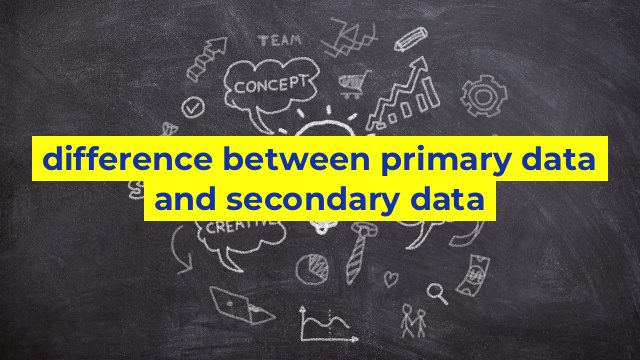Distinguishing between primary data and secondary data – A Primer
Data is a crucial component for any research or business analysis. It helps you understand your target audience as it represents meaningful insights that can be leveraged to make smarter decisions. However, data can be categorized into two types – primary data and secondary data. In this article, we shall discuss the differences between these two forms of data in greater detail.
What is Primary Data?
Primary data refers to information that has been collected first-hand. It is generated by an individual or a group of individuals to fulfill a specific research objective. Essentially, primary data is raw and unprocessed data, which has not been manipulated or altered in any way. The collection of primary data is usually done by conducting surveys, interviews, experiments, questionnaires, or observations. The data collected from these activities is then analyzed to derive insights and create informed decisions.
What is Secondary Data?
Secondary data, on the other hand, is information that has already been collected and processed by someone else for a different purpose. This data is collected from various sources, such as magazines, books, journals, market research reports, and portals. Secondary data is often used to supplement primary data, as it can help support research findings and validate the results obtained from primary research.
The Differences between Primary and Secondary Data
Here are the significant differences between primary data and secondary data:
1. Data Source – The primary data is derived directly from the original data source, such as the individuals or groups involved, while secondary data is taken from other sources, such as reports, journals, or books.
2. Originality – Primary data is original and unmanipulated, whereas secondary data is processed data that has already undergone some manipulation and categorization.
3. Cost – The collection of primary data is expensive as it involves additional resources like time, money, and manpower, If not collected properly, primary data might not be accurate. Whereas secondary data is usually cheaper to obtain as it has already been collected and analyzed by someone else.
4. Suitability – Primary data is suitable for research and analysis, statistical modeling and prediction, whereas secondary data is useful for providing additional information that supports primary research.
Final Thoughts
In conclusion, both primary and secondary data have their advantages and disadvantages, and it is essential to choose the one that provides the most accurate and relevant information for a particular study or research. Researchers, analysts, and business owners must understand the differences between the two and carefully select the type of data they need, depending on their research objectives, budget, timeframe, and other factors.
Table difference between primary data and secondary data
| Primary Data | Secondary Data |
|---|---|
| Primary data is collected directly from the source. | Secondary data is collected by someone else and is already available. |
| It is original data that is collected for a specific purpose. | It is data that has already been collected for some other purpose and can be reused. |
| Examples of primary data include surveys, interviews, questionnaires, and experiments. | Examples of secondary data include published reports, government statistics, and company financial statements. |
| It is more expensive and time-consuming to collect primary data. | It is less expensive and less time-consuming to collect secondary data. |
| The quality of primary data depends on the researcher’s skills and methodology. | The quality of secondary data depends on the source and accuracy of the data. |
